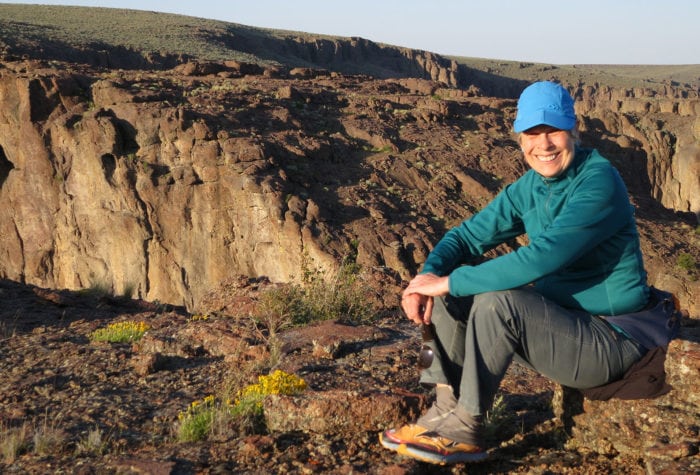Author: Renee Schiavone | Published: October 6, 2023 | Category: Where-To
This article originally appeared in our Fall + Winter 2023 Desert Ramblings Newsletter.
Among the diverse geology, arid climate, and abundant plants and wildlife that make the high desert a unique landscape, it’s the clear, unobstructed skies that tend to live the most vividly in our memories.
Lucky for Oregon’s desert lovers, this fall we have a special show coming to our favorite skies. On Saturday October 14, 2023, the annular solar eclipse will cross North America with its path traversing across southeastern Oregon. One of four types of solar eclipses, the annular solar eclipse is a product of the moon passing between the sun and Earth, at a point when the moon is farthest from Earth. As it’s farther away, it appears smaller than the sun and does not completely cover it, displaying a ring of light around a dark disk.
Where to View
Within the Oregon high desert, the annular eclipse path will include Summer Lake, Lake Abert, Greater Hart-Sheldon, Pueblo Mountains WSA, parts of the Alvord Desert, and the McDermitt Caldera.
When to View
In the U.S., the first landfall of the annular solar eclipse will be at Oregon Dunes National Recreation Area at 9:15 a.m. PST, moving over parts of southeastern Oregon between approximately 9:20 a.m. and 9:24 a.m. The eclipse will be at maximum annularity in Summer Lake and Lake Abert at approximately 9:20 a.m., reaching the Greater Hart-Sheldon at approximately 9:21 a.m., then passing over the Pueblo Mountains WSA and southern parts of Alvord Desert towards Fields at approximately 9:22 a.m., and finally crossing over McDermitt Caldera at approximately 9:23 a.m.
The sun is never completely blocked by the moon during an annular solar eclipse, so it’s important to note it’s never safe to look directly at the sun without specialized eye protection designed for solar viewing. Additionally, viewing any part of the bright sun through a camera lens, binoculars or a telescope without a special-purpose solar filter secured over the front of the optics will instantly cause severe eye injury. To safely view the eclipse, look through safe solar viewing glasses or a solar camera filter.
For more desert outings, check out our Visitor’s Guides at ONDA.org/guides

